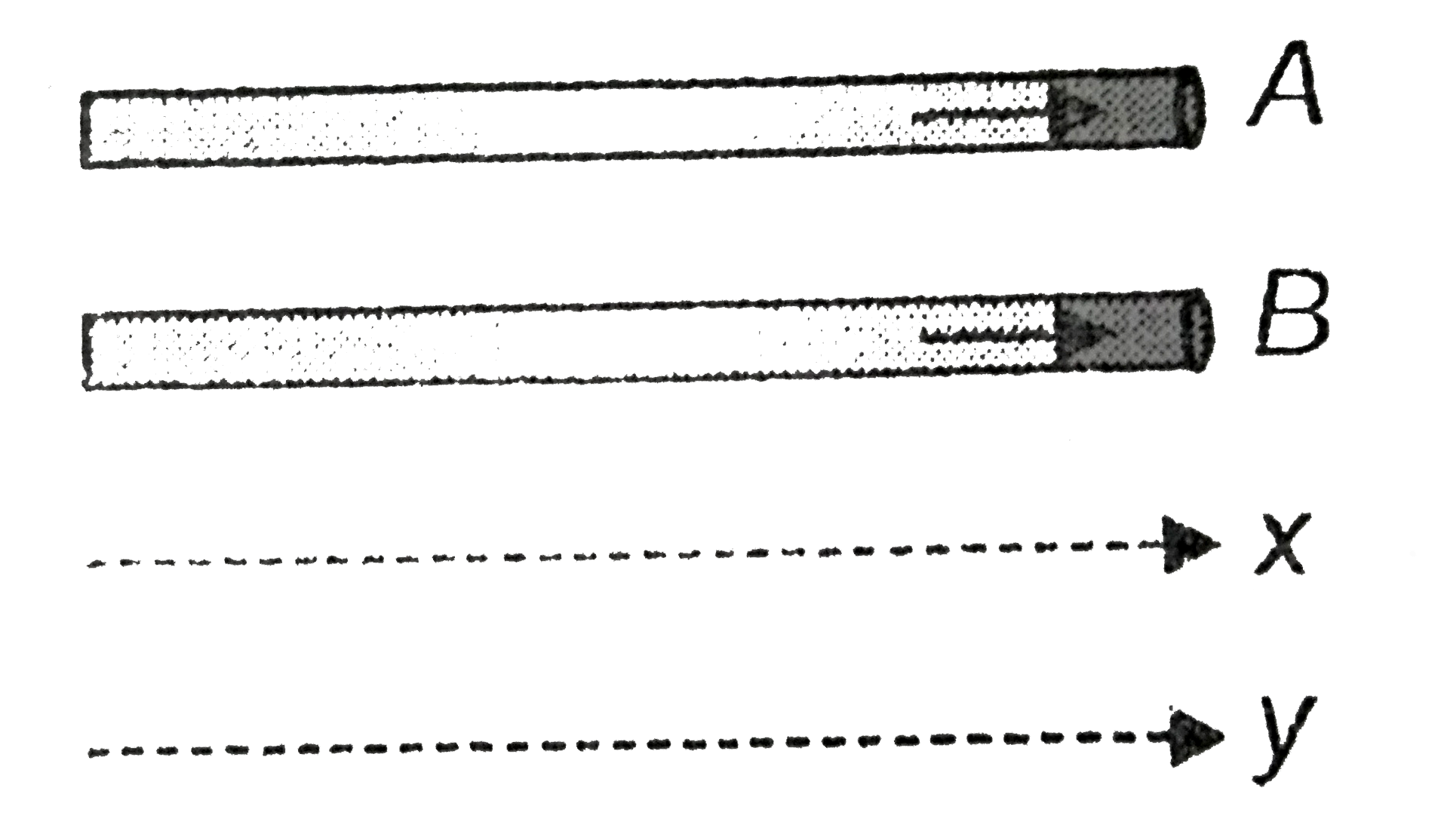Two conductors A and B are joined by a copper wire. State the direction of flow of electrons in each of the following cases :
The correct Answer is:(i) B to A (ii) A to B (iii) Bto A.
To solve the problem of determining the direction of flow of electrons between two conductors A and B connected by a copper wire under different charge conditions, we can follow these steps:
Step 1: Understand the Charge Conditions
We have three cases to analyze:
1. Case 1: Conductor A is positively charged and Conductor B is uncharged.
2. Case 2: Conductor A is negatively charged and Conductor B is uncharged.
3. Case 3: Conductor A is positively charged and Conductor B is negatively charged.
Step 2: Analyze Each Case
Case 1: A is positively charged and B is uncharged
- Since A is positively charged, it has a higher electric potential compared to B, which is uncharged (considered to have zero potential).
- Electrons will flow from the region of lower potential (B) to the region of higher potential (A).
- Direction of flow of electrons: B to A
Case 2: A is negatively charged and B is uncharged
- Here, A has a lower electric potential (negative charge) compared to B (uncharged, zero potential).
- Electrons will flow from A (lower potential) to B (higher potential).
- Direction of flow of electrons: A to B
Case 3: A is positively charged and B is negatively charged
- In this case, A has a higher potential (positive charge) compared to B (negative charge).
- Electrons will flow from B (lower potential) to A (higher potential).
- Direction of flow of electrons: B to A
Final Summary of Directions
1. Case 1: B to A
2. Case 2: A to B
3. Case 3: B to A
We have three cases to analyze:
1. Case 1: Conductor A is positively charged and Conductor B is uncharged.
2. Case 2: Conductor A is negatively charged and Conductor B is uncharged.
3. Case 3: Conductor A is positively charged and Conductor B is negatively charged.
Case 1: A is positively charged and B is uncharged
- Since A is positively charged, it has a higher electric potential compared to B, which is uncharged (considered to have zero potential).
- Electrons will flow from the region of lower potential (B) to the region of higher potential (A).
- Direction of flow of electrons: B to A
- Here, A has a lower electric potential (negative charge) compared to B (uncharged, zero potential).
- Electrons will flow from A (lower potential) to B (higher potential).
- Direction of flow of electrons: A to B
- In this case, A has a higher potential (positive charge) compared to B (negative charge).
- Electrons will flow from B (lower potential) to A (higher potential).
- Direction of flow of electrons: B to A
1. Case 1: B to A
2. Case 2: A to B
3. Case 3: B to A
Topper's Solved these Questions
- BOOK - ICSECHAPTER - CURRENT ELECTRICITYEXERCISE - Exercise-9(A)22videos
CURRENT ELECTRICITY
- BOOK - ICSECHAPTER - CURRENT ELECTRICITYEXERCISE - Exercise-9(A)Multiple choice3videos
CURRENT ELECTRICITY
- BOOK - ICSECHAPTER - ELECTRICITY AND MAGNETISM EXERCISE - TOPIC 2 Magnetism (4 Marks Questions )6videos
ELECTRICITY AND MAGNETISM
Similar Questions
What is the direction of flow of electrons in a galvanic cell?
View SolutionFig. 9.26 below shows two conductors A and B. Their charges and potentials are given in the diagram. State the direction of (i) flow of electrons, and (ii) flow of current, when both the conductors are joined by a metal wire.
 View Solution
View SolutionState the direction in which this left bank tributary is flowing:
View SolutionA conductor AB is joined to a cell with its end A at a low potential and the end B at a high potential. (a} State the direction of flow of electrons in it. (b) What will be the direction of flow of conventional current in the conductor?
View SolutionWhen two isolated conductors A and B are connected by a conducting wire positive charge will flow from .
 View Solution
View SolutionIf the two ends of a p-n junction are joined by a wire .
View SolutionExplain how electrons flow in a conductor?
View SolutionA and B are two conductors carrying a currwnt i in same direction x and y are two electron beams moving in the same direction .there will be
 View Solution
View SolutionA and B are two conductors carrying a current i in the same direction x and y are two electron beams moving in the same direction. There will be
 View Solution
View SolutionTwo spherical conductor A and B of radii a and b (b>a) are placed concentrically in air. The two are connected by a copper wire as shown in figure. The equivalent capacitance of the system is
 View Solution
View Solution

